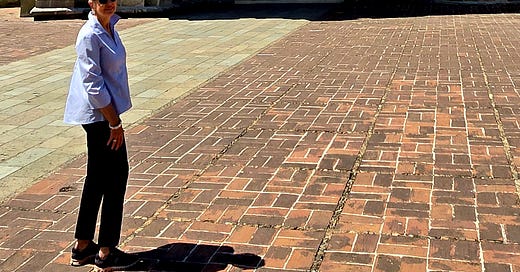These last few weeks my husband Bart and I have been traveling in Mexico, trying to ignore what’s happening in our own country in favor of learning all we can about a magnificent, vibrant culture with ancient and noble roots.
As readers of this newsletter know, I have not totally tuned out. I’ve been following the new administration’s chaotic attempts at erasing DEI, the field I’ve worked in and helped shape for the last 35 years.
Mexico is of course proudly diverse, as well as explicit in the value it places on solidarity among its people. Solidarity has a similar meaning as inclusion, though with greater emotional and historical resonance. Perhaps because of Mexico’s long, arduous, and bloody path to independence and democracy, you see references to Solidaridad everywhere you turn.
The trip gave me an opportunity to reflect upon how solidarity manifests in Mexican culture. Especially when visiting the majestic Basilica de Nuestra Señora de la Soledad in Oaxaca, pictured above. This was in part because I mistook Soledad to mean Solidaridad, when in fact it means pretty much the opposite. The church pays homage to Our Lady of Solitude.
Given that it was built in the 17th Century, this is hardly surprising. The missionaries who followed the conquistadors to Mexico were not eager to encourage solidarity among the people who occupied the land. Divide and conquer was their practice, as it remains among those who seek to arbitrarily rule those they purport to lead.
These reflections stirred sadness in me at the sharp divisions in my own country. But my experience in Mexico also strengthened my resolve to continue to advocate for the practice of inclusion, and the solidarity that informs it.
Like what you’re reading? Click here to order my most recent book Rising Together, or How Women Rise, both are available from Amazon or from your favorite bookseller.






Thank you Manuel. This is part of why I found Mexico inspiring and moving. The people who did the actual labor always found a way to, as you say, put their mark on what they were building or cooking or singing or carving or painting. The mix is what makes a culture live.
Alright, so picture this: the Spanish show up in Mexico, right?
And they're not just there for the gold, they're big on the whole "convert everyone to Catholicism" thing.
So, churches pop up, like, everywhere. But it's not just the fancy Spanish guys with their blueprints and whatnot building these things. Nah, it's way more complicated.
You've got these Spanish architects and priests, sure, they're the ones drawing up the plans, thinking about those cool European styles, you know, like Gothic or Baroque, but they're in Mexico now, so things get a little... different.
And who's doing the actual heavy lifting? Mostly the Indigenous folks. They're the ones hauling the stones, mixing the mortar, basically building the whole darn thing, and a lot of times, they didn't really have a choice.
Think of it like this: the Spanish are like, "Hey, we're building a church, you're gonna help," and well, they helped. But here's the cool part, these Indigenous artisans, they knew their stuff. They weren't just following orders blindly. They'd sneak in their own little touches, their own designs, their own symbols, you know?
So, you get this amazing mix of European and Indigenous art in these churches. Like, you'll see these super detailed carvings that look Spanish, but then you'll spot something else, something that's totally from the local culture.
It’s like they were saying, "Yeah, we're building your church, but we're putting our mark on it too."
And don't forget, in some places you'd have enslaved Africans contributing as well, bringing their own skills to the mix.
So, it's this whole crazy blend of cultures, all coming together to build these churches.
It wasn't just some Spanish project, it was a whole community effort,
even if a lot of that effort was forced.
And when you walk into one of those old churches today, you can still see that mix, that story, right there in the walls.
It’s a real testament to how cultures can clash and blend at the same time, leaving behind something totally unique.